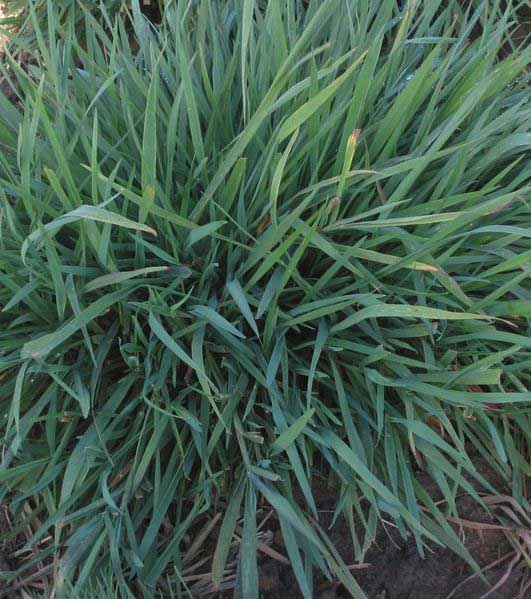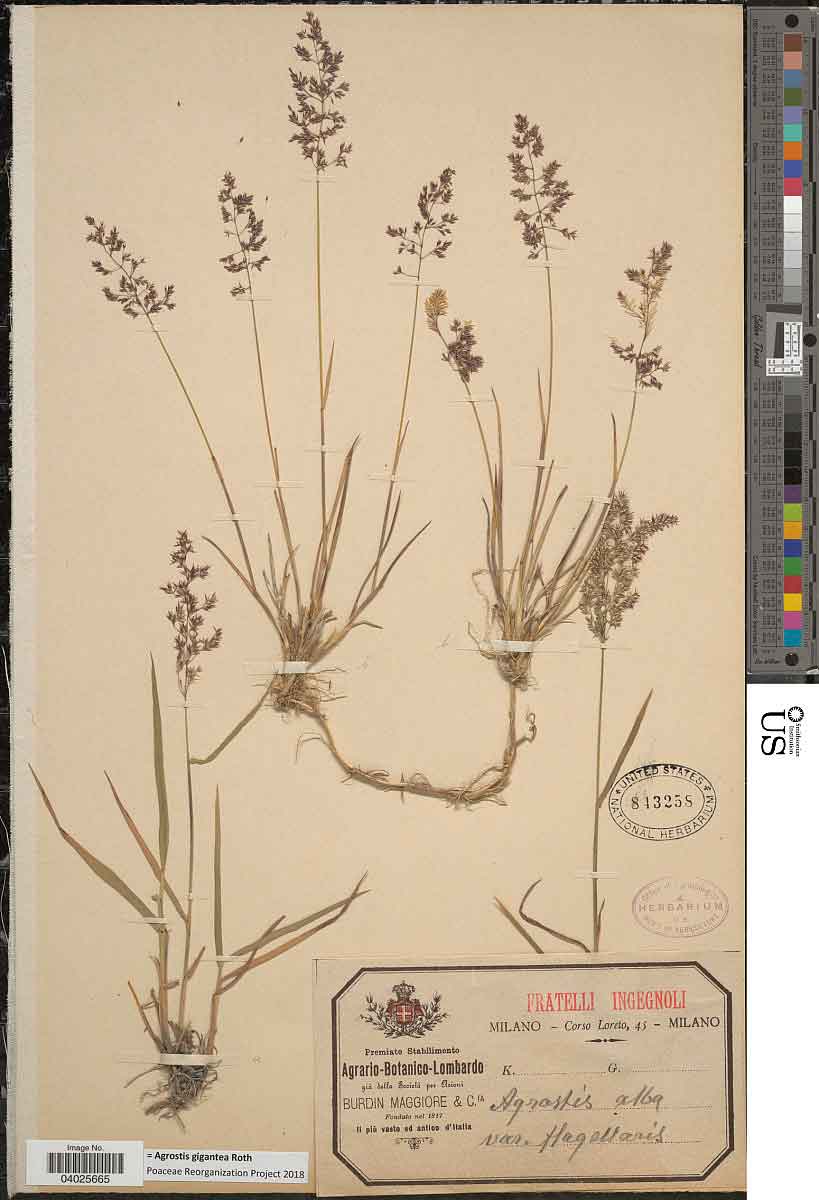
Agrostis gigantea ( *)
Classification System: APG IV
Superregnum: Eukaryota
Regnum: Plantae
Cladus: Angiosperms
Cladus: Monocots
Cladus: Commelinids
Ordo: Poales
Familia: Poaceae
Subfamilia: Pooideae
Tribus: Aveneae
Subtribus: Agrostidinae
Genus: Agrostis
Species: Agrostis gigantea
Name
Agrostis gigantea Roth

References
USDA, NRCS. 2006. The PLANTS Database, 6 March 2006 (http://plants.usda.gov). Data compiled from various sources by Mark W. Skinner. National Plant Data Center, Baton Rouge, LA 70874-4490 USA.
Tentamen Florae Germanicae 1:31. 1788
USDA, ARS, National Genetic Resources Program. Germplasm Resources Information Network - (GRIN) [Online Database]. [1]
Vernacular names
eesti: Suur kastehein
suomi: Isorölli
polski: Mietlica olbrzymia
Agrostis gigantea, known by its common names black bent[2] and redtop, is a perennial grass of the Agrostis genus.
It is native to Europe, but in the cooler areas of North America was widely used as a pasture grass until the 1940s. Although it has largely been replaced by soybeans and more palatable grasses, it still gets some use in poor soils. It was one of the grasses planted in areas disturbed by the Trans-Alaska Pipeline. It generally does well in response to fires, due to survival of rhizomes and seeds.[3]
It can be found in open woodland, rough grassland, hedgerows, roadsides and waste ground, and as a weed on arable land.
This species is similar to Agrostis stolonifera, with the key difference being that the latter has stolons. In fact the two are sometimes treated as a single species, and it is not always clear precisely what an author means by Agrostis alba or Agrostis stolonifera.[3]
Many internet sources describe Agrostis capillaris as being the tallest of the bent species. However C E Hubbard describes its height as ranging from 10 to 70 cm high, whereas Agrostis gigantea is 40–120 centimetres (16–47 in). Marjorie Blamey, Richard and Alastair Fitter also describe black bent as being taller.[4][5]
Description
The leaves are dull green. The ligule is blunt, but toothed and up to 6 millimetres (0.24 in) long.
The panicle is open and loose, of green or purplish colour. It flowers from June to August.
The leaves are rolled in shoot, not hairy, no auricles, but the plant has rhizomes.
ligule up to 6mm long, no auricles, not hairy, rolled
References
John Hilty (November 23, 2007). "Redtop". Grasses, Sedges, and Non-Flowering Plants of Illinois. Archived from the original on December 12, 2007. Retrieved December 17, 2007.
BSBI List 2007 (xls). Botanical Society of Britain and Ireland. Archived from the original (xls) on 2015-06-26. Retrieved 2014-10-17.
"Agrostis gigantea". Fire Effects Information System. United States Forest Service.
C E Hubbard (1978). Grasses. Penguin Books.
Marjorie Blamey, Richard and Alistair Fitter (2003). Wild Flowers of Britain and Ireland. ISBN 0-7136-5944-0.
Retrieved from "http://en.wikipedia.org/"
All text is available under the terms of the GNU Free Documentation License

